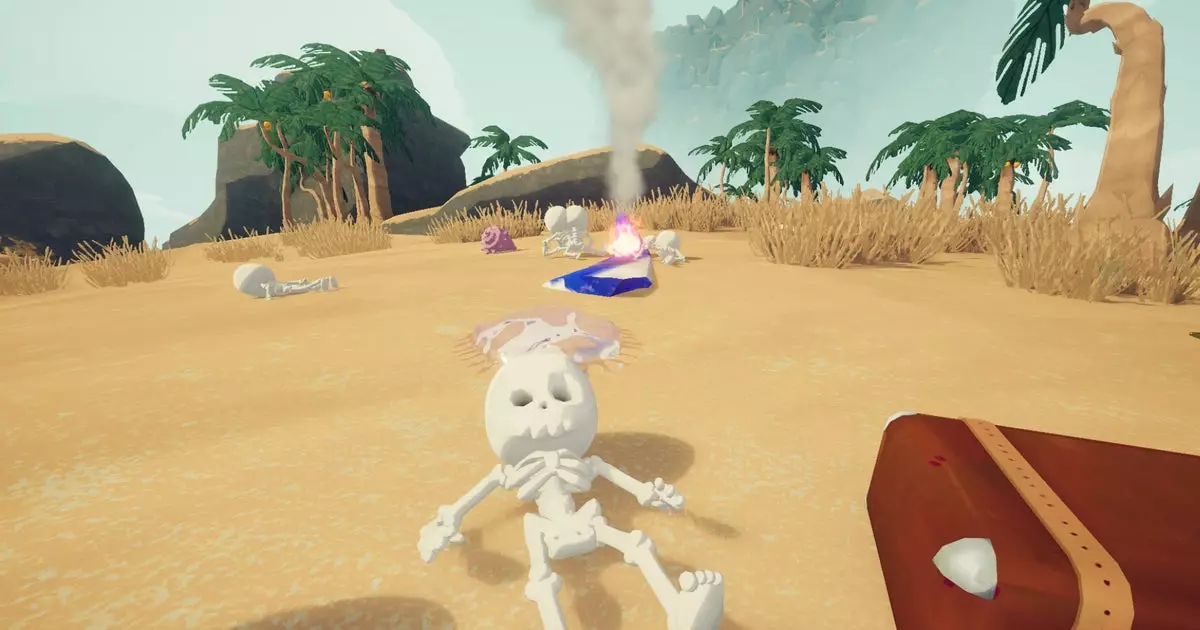In the realm of cooperative climbing games, Peak has garnered praise for its expansive and challenging virtual landscapes. Yet, despite its towering mountains and perilous trails, some players yearn for a more visceral emotional experience—something that pierces beyond the thrill of conquest and ventures into raw, unfiltered reality. Enter the Everest mod, a daring addition that infuses the game with a darkly poetic atmosphere: the haunting presence of fallen players represented through skeletal remains scattered across the terrain. This modification not only alters the visual aesthetic but transforms the entire gameplay experience into a morbid but compelling reflection on mortality and shared peril.
What makes Everest truly provocative is its design philosophy. Instead of sophisticated narrative devices or ghostly apparitions, it employs the stark image of bones—the stark remnants of adventurers who met their end in pursuit of greatness. As players ascend the treacherous peaks, they are subtly reminded of the fragility of human life, reinforced by the haunting constellations of skeletons marking the ground. This stark visual cue adds a layer of depth that challenges even the most seasoned climbers to reevaluate their approach—perhaps urging more caution, more respect for the mountain, or a deeper appreciation of the collective risk involved in this shared pursuit.
Social Burial and Collective Memory: Creating Unity in Shared Demise
One of the most striking aspects of Everest is its emphasis on community and collective memory. With over 10,000 skeletons from thousands of players in just a single day, the mod creates an eerie tapestry of interconnected stories. Each skeleton acts as a silent monument to another player’s failure—a memorial that bridges the gap between individual experiences and a broader shared tragedy. In this way, the mod shifts the gameplay from mere personal achievement to a collaborative monument of resilience, defeat, and the persistent human spirit striving against nature’s cruel whims.
From a psychological standpoint, this shared display of mortality may foster a deeper sense of camaraderie. Facing death in a virtual space becomes less isolating when you see the traces of countless others who have traversed the same treacherous path before you. It’s a provocative narrative device that invites players to feel part of an ongoing, collective saga—a reminder that they are neither alone in their struggles nor immune to misfortune. The skeletons, although macabre, serve as a unifying symbol: a testament to the communal nature of danger and the perils that define high-stakes exploration.
Redefining Challenge: From Serene Heights to Gritty Realism
Unlike the polished, often antiseptic aesthetics of typical adventure games, Everest’s skeletal landscape introduces an element of gritty realism. It strips away the fantasy veneer and replaces it with a visceral reminder of mortality. The mod’s configurable options allow players to customize the experience—whether they want a sparse scattering of bones or a landscape densely populated with reminders of past failures. Notifications and technical indicators ensure players aren’t left bewildered by the visual chaos, maintaining a balance between shock and clarity.
By introducing such stark realism, Everest challenges players to confront their own limitations. It nudges them towards a more cautious, strategic approach—knowing that every misstep leaves a visible mark. This isn’t merely about risking a fall or losing progress; it’s about forging a connection with a community of adventurers who have come before, each falling in their own way. The skeletons become tangible symbols of experience, growth, and sometimes, tragic end, serving as grim but necessary instructors in the art of endurance.
Controversy and Cultural Reflection
While Everest’s concept might seem provocative, it also raises questions about how we process death and risk in virtual spaces. For some, the display of skeletons could be seen as morbid or disrespectful, trivializing the real tragedy behind mortal danger. Conversely, others may interpret it as a poetic tribute—an in-game acknowledgment of the human cost behind every victory and failure. This duality highlights an underlying tension: should gaming be escapism, or can it serve as a mirror for life’s harsh realities?
In my opinion, the Everest mod taps into an essential truth about human nature—our fascination with mortality and our desire to confront it, even symbolically. It transforms the act of climbing from an aesthetic achievement into a shared ritual that recognizes the dangers we face, both in games and in real life. Such a bold approach invites players to reflect on their own journeys—fearfully, thoughtfully, and collectively—and it elevates the gaming experience from mere entertainment to something more profound.
By integrating the stark imagery of death into a cooperative game, the Everest mod succeeds in fostering a more authentic, emotionally resonant form of engagement. It dares players to look beyond the thrill and to acknowledge the enduring human narrative of risk, community, and mortality. In doing so, it doesn’t just redefine what a climbing game can be; it challenges us to reconsider the stories we tell about ourselves—stories etched in bones, shared across a community that refuses to forget.

